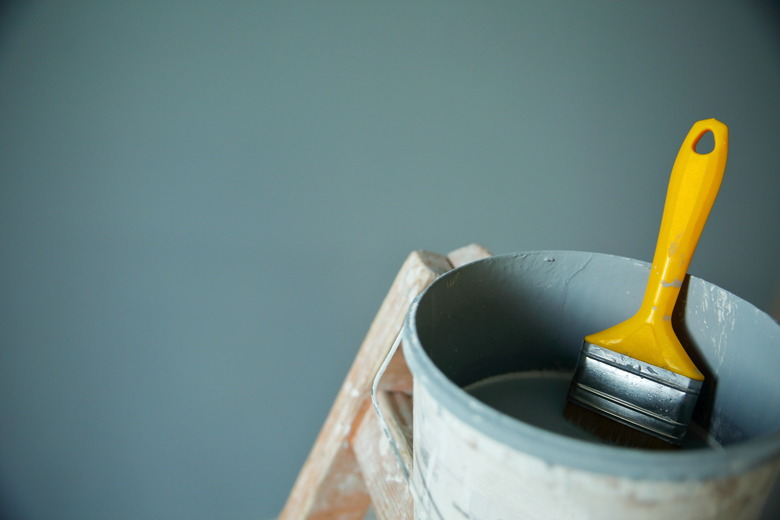Why Is My Interior/Exterior Semi-Gloss Sticky?
We may receive a commission on purchases made from links.
In ideal conditions, both interior and exterior paints dry as intended, whether the paint is glossy, matte, or somewhere in between. Semi-gloss paint, and any other paint sheen, sometimes remains a bit tacky to the touch. This may be due to the temperature or moisture in the air, or because the paint simply needs longer to dry.
Tip
Semi-gloss paint may feel sticky if it hasn't had enough time to dry. Too much moisture in the air could cause a similar issue.
Wait Longer Between Coats
Wait Longer Between Coats
The label on the paint can may indicate that the paint dries to the touch in two hours, but that's a general guideline, not a firm rule. If you're waiting to apply a second coat but the paint still feels tacky even though you've waited the recommended time, wait another hour or so, or check back tomorrow if it's already getting late.
Even if the fresh paint on the front of your house dries quickly, it doesn't mean the same paint dries in the same amount of time on the side or back of your house. Paint applied in direct sunlight on a moderately warm day dries faster than paint applied in the shade. This is especially true if it's a little cool outside, or if it recently rained and there's still a lot of moisture lingering in the air.
Paint During Better Conditions
Paint During Better Conditions
Read the paint label to determine ideal painting conditions. Most paint manufacturers recommend a specific temperature range to apply the paint. For example, paint applied when it's cold enough to snow probably won't dry very fast, if at all, and it may not adhere properly. Apply paint when it's 60 to 80 degrees Fahrenheit for best results, whether using oil-based or water-based paints. This temperature range applies both indoors and out; painting in an unheated room on a cold winter day could result in a less-than-stellar paint finish, or paint that remains tacky for far longer than expected.
Paint indoors or out when outdoor conditions are in the 40 percent to 70 percent relative humidity range. Outdoor humidity affects indoor humidity levels, especially if there's no heat, air conditioning, or dehumidifier running in the room. If the humidity level is too high, the paint takes longer to dry, as drying paint really just means the moisture evaporates out of the paint. If there's too much moisture in the air, the moisture in the wet paint won't evaporate during the intended time frame. If you've already painted on an overly humid day, just wait until the weather improves before touching the paint to ensure it's dry enough for another coat.
If you're in the middle of an interior painting project and it's humid outside, run a space heater, dehumidifier, or air conditioner in the room to keep both a comfortable temperature and a moderate humidity level, depending on what's needed on that particular day. The end result is a better paint job, and less time spent waiting for paint to dry. These same devices also come in handy for ensuring that tacky paint already on the walls finally dries.
Proper Preparation Is Key
Proper Preparation Is Key
If the project surface isn't clean or primed before painting, it could cause problems with the final paint finish. For instance, kitchen cabinets and walls near the stove probably have a greasy residue on them, thanks to years of cooking. If you painted atop that grime, the paint either won't adhere, it won't look smooth, or the paint itself may feel tacky while nearby paint feels dry. Make sure any surface you're painting is relatively clean, based upon the recommendations on the paint can label.
Use a stain-blocking primer, if necessary, when painting over areas that just don't turn out as clean as you'd like, such as nicotine-stained walls. A primer also helps the paint adhere if you're painting a bare surface where old paint chipped off. Primer makes paint adhere better, which ultimately results in a better finished project.
